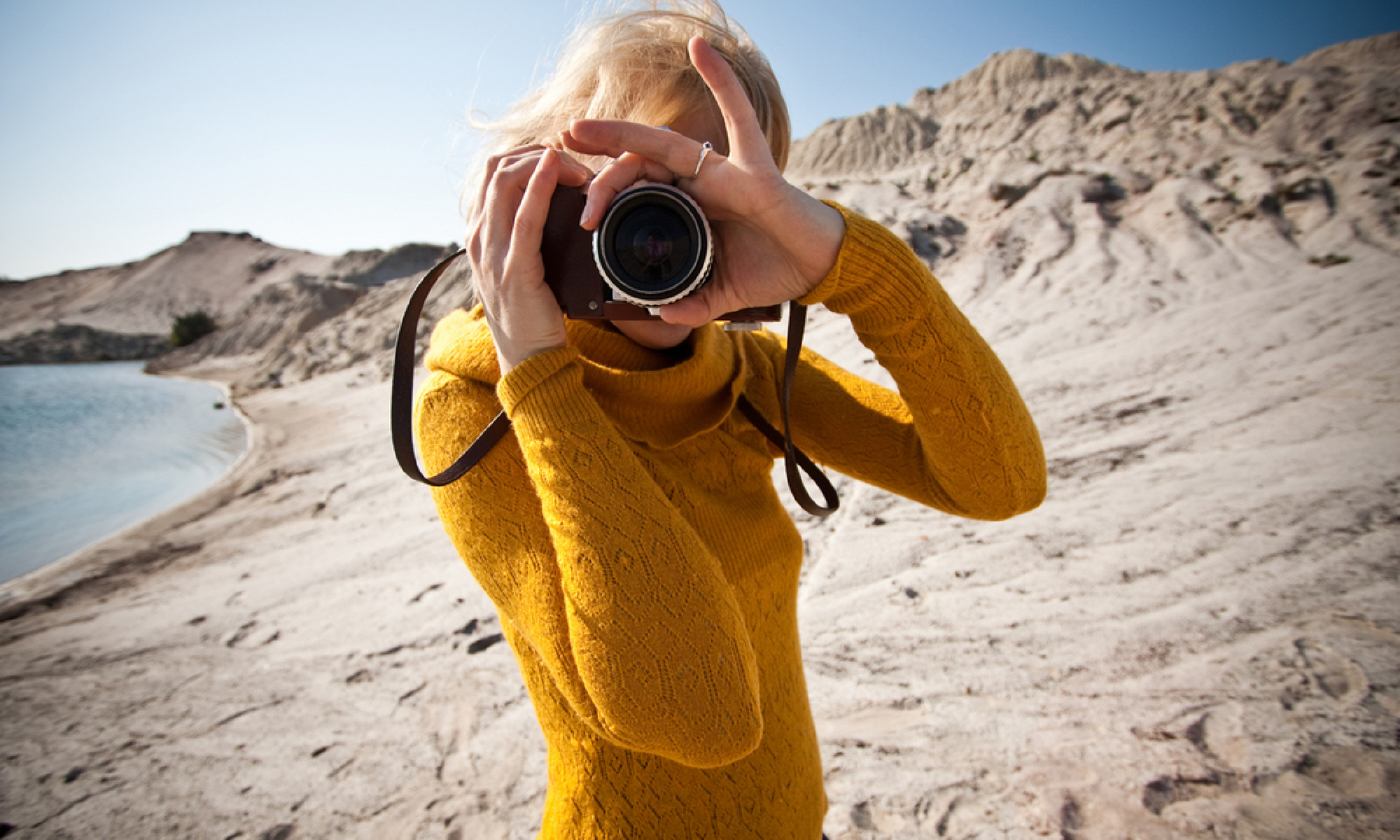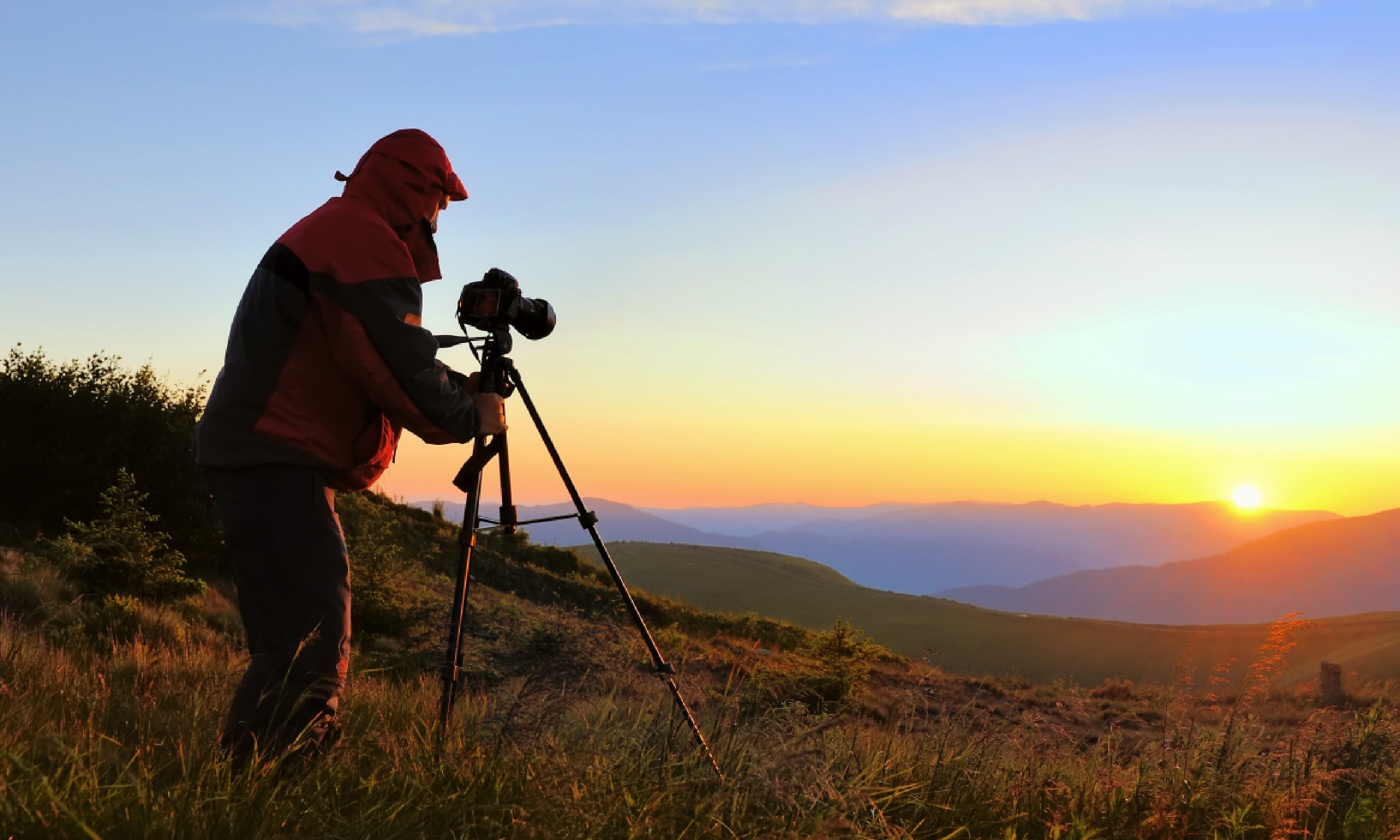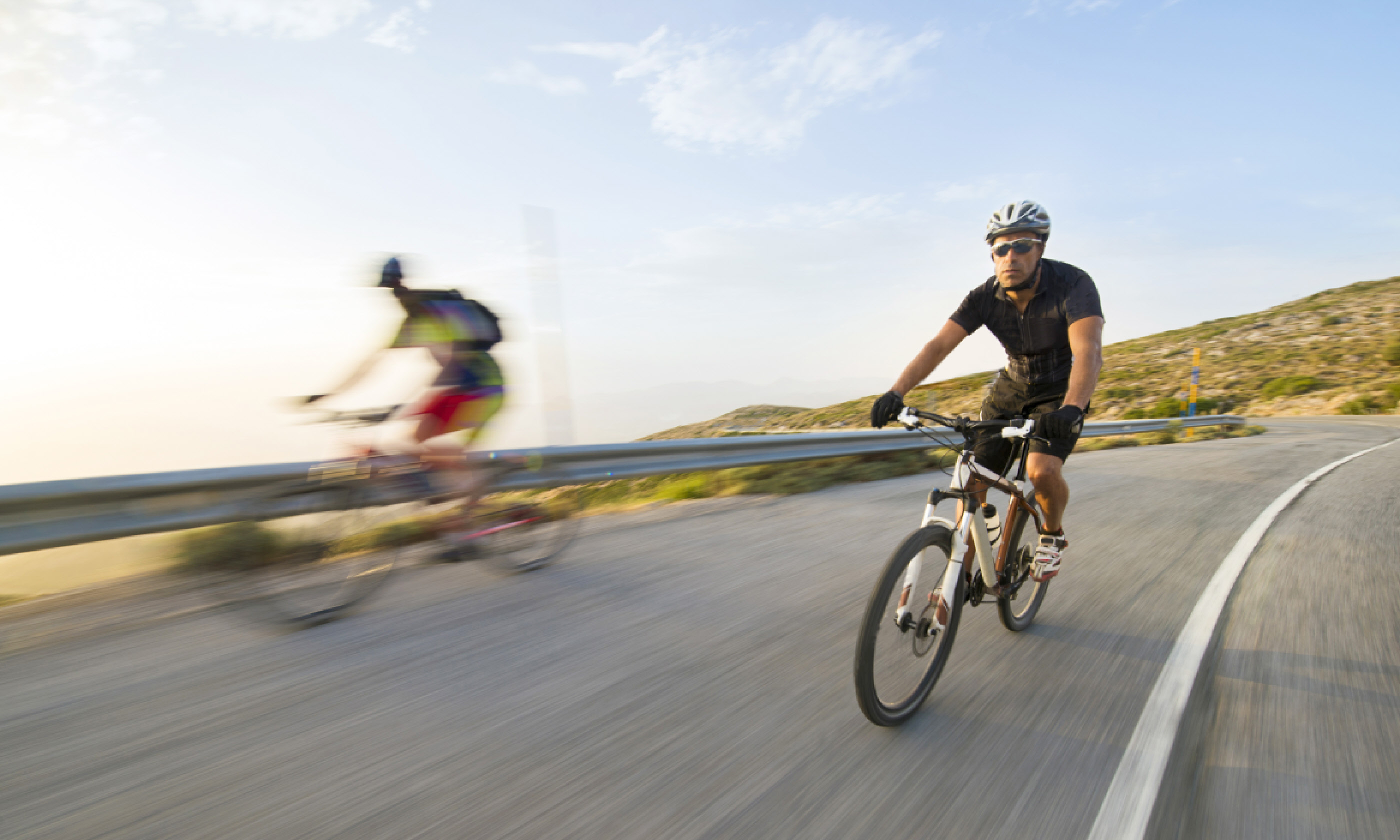
Zooms, panning shots, memory cards and more - everything you need to know about taking the perfect photograph
This is the most important thing to do to improve your photos. Don’t just snap a picture and get the same boring shot as everyone else. Consider the angle and viewpoint; think about composition, framing and lens choice then you can create a unique picture whatever camera you use.
RAW images are much higher quality than JPEGs but will need to be post-processed on a computer. RAW mode allows you to change the white balance without any loss of quality. You can even recover overexposed highlights.
Typically, an 18mm to 200mm will cover every focal length you’ll ever need. Having one lens is a bit of a gamble, but you won’t have to change it and risk getting dust on your sensor.

Photographer using a tripod (Shutterstock)
This will let you take night shots and shoot in low light, and means you can shoot with a very narrow aperture to achieve the maximum depth of field. Tripods also help your composition.
This strangely-named tool is an electrostatically charged sensor brush that lifts dust and dirt from your sensor. Self-cleaning sensors can help, but the best way to clean is with a sensor brush.
With a good back-up routine you won’t lose any of your precious images. Whether transferring them onto a memory stick or using an external hard drive, find an option that works for you – and stick to it. Labelling is also very important, so you can retrieve images from your archive quickly and easily.
Auto functions are, at best, a guess. Switch off auto white balance, auto contrast and even consider turning off auto exposure. It might take you a little time to learn the manual alternatives, but having more control over your pictures will improve them.

Fast cyclists on a mountain
Panning is a technique where you shoot with a slow shutter speed and move the camera during exposure. This blurs the background, introducing movement to photos that would look stationary if you snapped them with a fast shutter speed.
Preferably get one with a ‘flag system’ that indicates which cards been exposed. Label each card with your name, email address and mobile number in case you lose it.
Read The Flipping Manual. Your camera has lots of useful functions and you’ve paid for them, so you might as well learn how to use them.